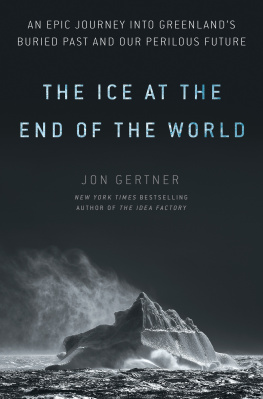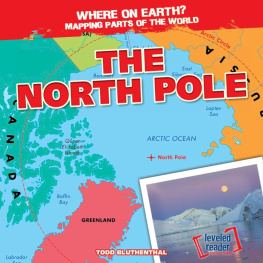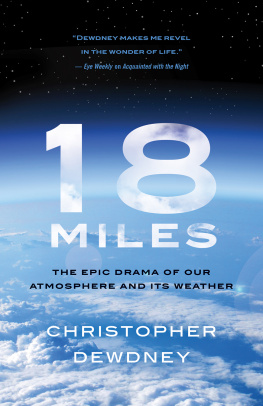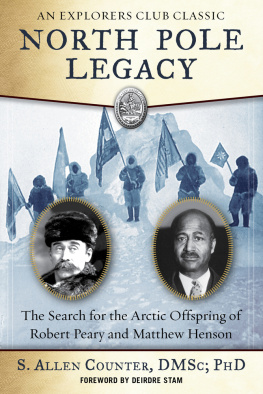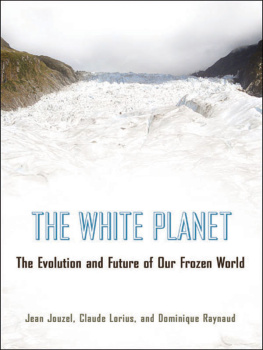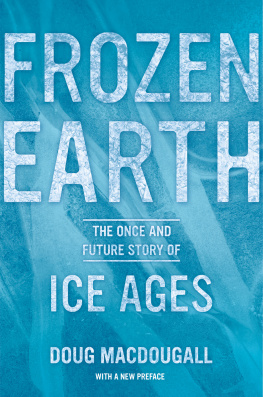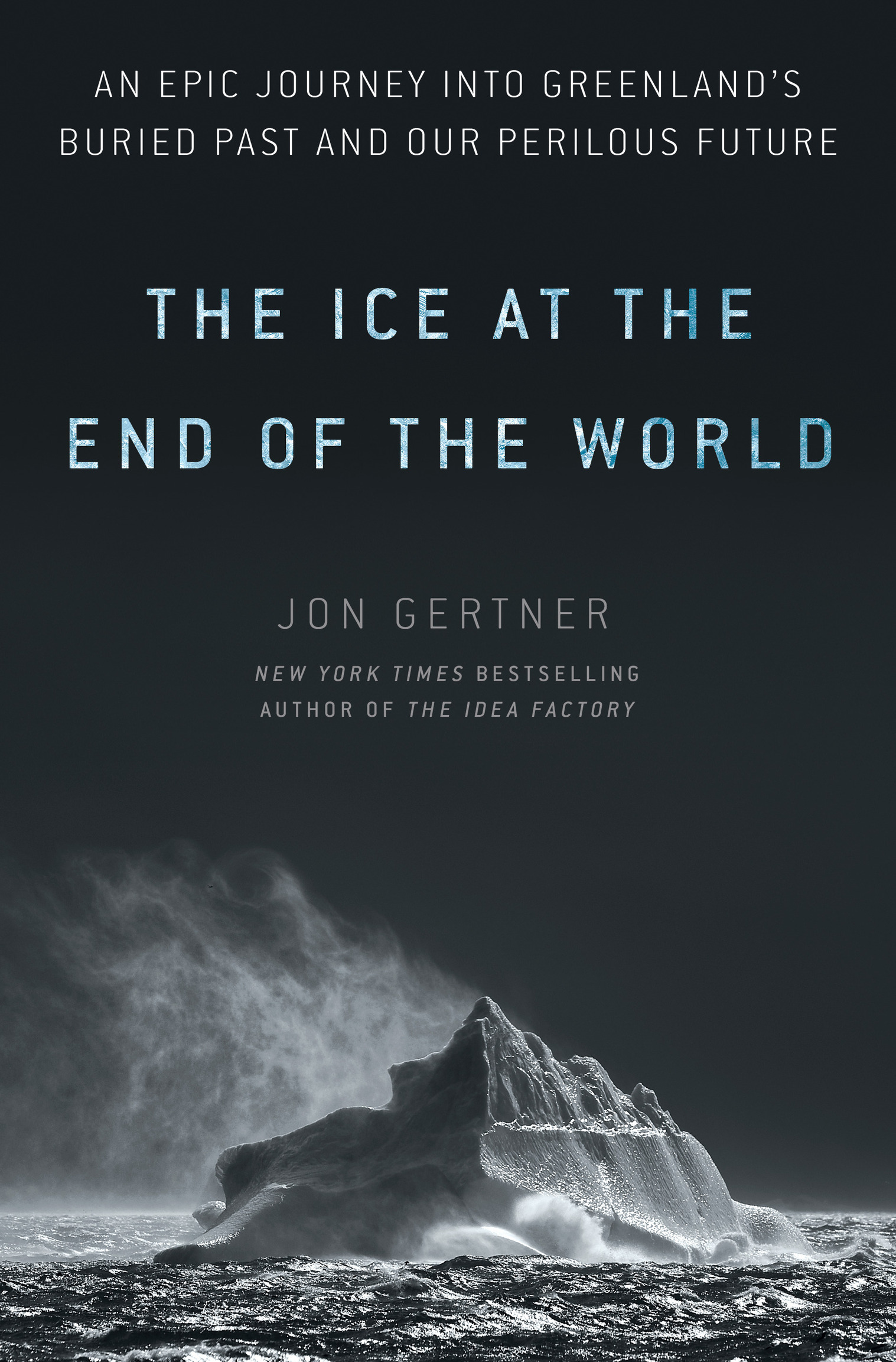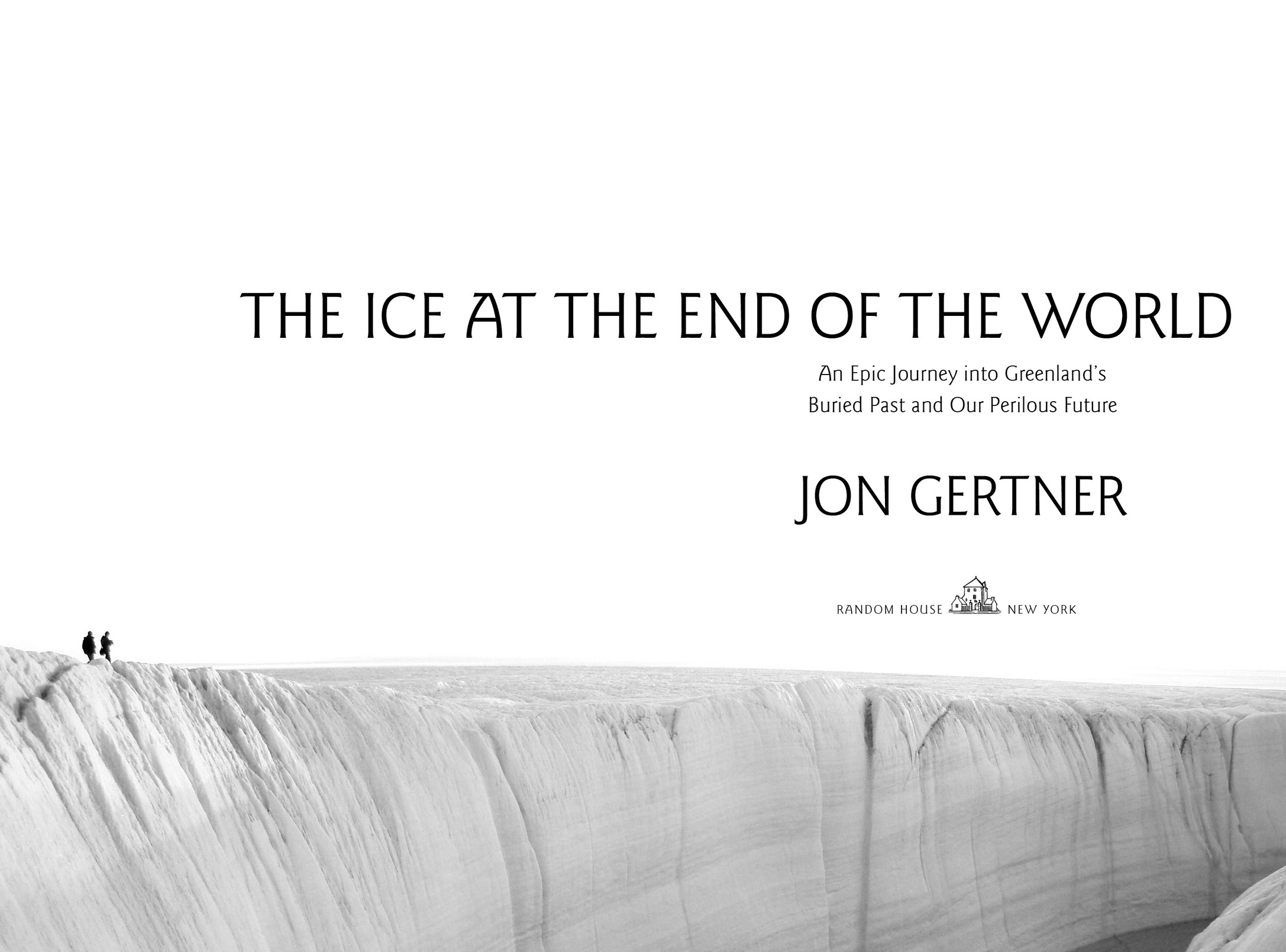Jon Gertner - The Ice at the End of the World: An Epic Journey Into Greenlands Buried Past and Our Perilous Future
Here you can read online Jon Gertner - The Ice at the End of the World: An Epic Journey Into Greenlands Buried Past and Our Perilous Future full text of the book (entire story) in english for free. Download pdf and epub, get meaning, cover and reviews about this ebook. year: 2019, publisher: Penguin Random House LLC, genre: Art. Description of the work, (preface) as well as reviews are available. Best literature library LitArk.com created for fans of good reading and offers a wide selection of genres:
Romance novel
Science fiction
Adventure
Detective
Science
History
Home and family
Prose
Art
Politics
Computer
Non-fiction
Religion
Business
Children
Humor
Choose a favorite category and find really read worthwhile books. Enjoy immersion in the world of imagination, feel the emotions of the characters or learn something new for yourself, make an fascinating discovery.
- Book:The Ice at the End of the World: An Epic Journey Into Greenlands Buried Past and Our Perilous Future
- Author:
- Publisher:Penguin Random House LLC
- Genre:
- Year:2019
- Rating:4 / 5
- Favourites:Add to favourites
- Your mark:
The Ice at the End of the World: An Epic Journey Into Greenlands Buried Past and Our Perilous Future: summary, description and annotation
We offer to read an annotation, description, summary or preface (depends on what the author of the book "The Ice at the End of the World: An Epic Journey Into Greenlands Buried Past and Our Perilous Future" wrote himself). If you haven't found the necessary information about the book — write in the comments, we will try to find it.
Jon Gertner takes readers to spots few journalists or even explorers have visited. The result is a gripping and important book.Elizabeth Kolbert, Pulitzer Prizewinning author of The Sixth Extinction
Greenland: a remote, mysterious island five times the size of California but with a population of just 56,000. The ice sheet that covers it is 700 miles wide and 1,500 miles long, and is composed of nearly three quadrillion tons of ice. For the last 150 years, explorers and scientists have sought to understand Greenlandat first hoping that it would serve as a gateway to the North Pole, and later coming to realize that it contained essential information about our climate. Locked within this vast and frozen white desert are some of the most profound secrets about our planet and its future. Greenlands ice doesnt just tell us where weve been. More urgently, it tells us where were headed.
In The Ice at the End of the World, Jon Gertner explains how Greenland has evolved from one of earths last frontiers to its largest scientific laboratory. The history of Greenlands ice begins with the explorers who arrived here at the turn of the twentieth centuryfirst on foot, then on skis, then on crude, motorized sledsand embarked on grueling expeditions that took as long as a year and often ended in frostbitten tragedy. Their original goal was simple: to conquer Greenlands seemingly infinite interior. Yet their efforts eventually gave way to scientists who built lonely encampments out on the ice and began drillingone mile, two miles down. Their aim was to pull up ice cores that could reveal the deepest mysteries of earths past, going back hundreds of thousands of years.
Today, scientists from all over the world are deploying every technological tool available to uncover the secrets of this frozen island before its too late. As Greenlands ice melts and runs off into the sea, it not only threatens to affect hundreds of millions of people who live in coastal areas. It will also have drastic effects on ocean currents, weather systems, economies, and migration patterns.
Gertner chronicles the unfathomable hardships, amazing discoveries, and scientific achievements of the Arctics explorers and researchers with a transporting, deeply intelligent styleand a keen sense of what this work means for the rest of us. The melting ice sheet in Greenland is, in a way, an analog for time. It contains the past. It reflects the present. It can also tell us how much time we might have left.
Jon Gertner: author's other books
Who wrote The Ice at the End of the World: An Epic Journey Into Greenlands Buried Past and Our Perilous Future? Find out the surname, the name of the author of the book and a list of all author's works by series.

